When it comes to city passes and travel cards, it’s usually fairly easy to figure out whether they would be worth it for you or not. For things like the Paris Pass or London Pass, they have a list of the most popular attractions and how much they cost, right there for you to see. The Swiss Travel Pass, however, is shrouded in mystery, or at least it was until I spent several days tracking down all of the prices and benefits.
A great many of the visitors and commenters on my popular page about where to go in Switzerland on a short visit are wondering whether the Swiss Travel Pass is a good deal. Embarrassingly, I’ve always had to answer that I found the pass too confusing to confidently advise people on. Now that has all changed, after literally days of research.
Note: This article was last updated in February, 2024.
Disclosure: This is a reader-supported website and some of the links are affiliate links where a small commission is paid to help keep this site going, but the cost to visitors is the same. The Swiss Travel Pass seems quite expensive at first, so it felt like it might be hard to get your money’s worth out of it. As it turns out, it’s pretty easy to get good value, and it’ll be a good deal for many visitors.
New in 2024
Prices increased an average of 5.9% from 2023 on the Swiss Travel Passes, but the Half Fare Card remains at CHF120, which is where it’s been for many years. Train fares in the country increased by similar percentages so the value is basically unchanged. There were no other notable changes to service or the included attractions and train routes.
>>>Buy the Swiss Travel Pass online
Where to stay in Interlaken and the Lauterbrunnen Valley
Since most people reading this will be visiting the Interlaken area and I get so many questions about it, I decided to write a detailed guide on which area to stay in while visiting this area.
>>>Where to stay in Interlaken or the Lauterbrunnen Valley in Switzerland
I included many huge photos in that post so readers will be able to get a better idea of what each place looks like and they are worth a look by itself.
>>>Lucerne or Interlaken: Which to visit and how long to stay?
The article just above will help you decide on how long to spend in each of Switzerland’s two best tourist areas.
Are you 100% sure where you want to go in Switzerland? This should help
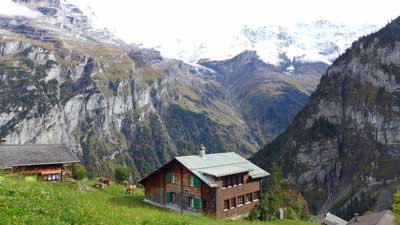
Zurich and Geneva are pleasant but dull. The good news is that Switzerland is packed with amazing sights and none of them are the big cities. If you aren’t 100% locked in yet, please read the article below and I think you’ll enjoy it.
Is the Swiss Travel Pass a good deal? Here's the short version

The bottom line is that the scenery, train journeys, and cable car rides in Switzerland are stunning and not found anywhere else in the world. They are also quite expensive if you pay for them one at a time. So no matter how you visit Switzerland, you are going to be paying quite a bit, or skipping the absolute best things that you’ve come there to see.
With good planning it’s quite easy to get great value out of a Swiss Travel Pass, but it might be a poor choice for those who don’t like to plan ahead. You can easily do a scenic train ride and a cable car in the same day, and still have time to do a scenic hike in the process.
First class or second class? Good news for most people
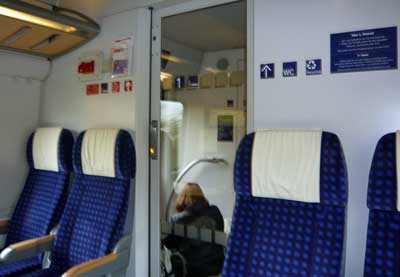
That said, Swiss Trains are literally the nicest in Europe and even the Second Class seats and carriages are nicer and roomier than trains in neighboring countries. The First Class seats are larger and nicer with only 3 across the cabin instead of 4, but honestly Second Class is perfectly comfortable for almost everyone.
Again, First Class on European trains like this is generally popular with business travelers where the company is paying and they need to get work done during the ride, and also senior citizens who don’t want to worry about a carriage full of backpackers. For most of the rest of us, Second Class is more than comfortable enough and the seat width and legroom compare to business-class airline seats. I’m a big and tall guy and I almost always travel in Second because it’s plenty comfortable enough and all the seats arrive at the same time anyway.
The longer you'll be in Switzerland, the better deal a Swiss Travel Pass will be
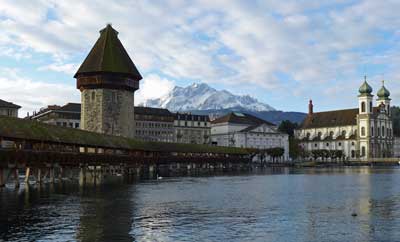
In other words, if you are staying 5 days or fewer, you have to do the math to determine your best option. But if you are spending even 6 or 7 days in Switzerland then the 6-day or 8-day Pass is almost guaranteed to be a great deal and your best choice. Once you have a Swiss Travel Pass you’ll absolutely love the ability to just hop on any train (excellent trains, always on time) and most boats and cable cars without having to worry about the cost. The per-day cost of an 8-day Pass even if you only use 6 of those days is about CHF65, and Switzerland is filled with amazing train rides and boats and cable cars that can get you that much value before noon each day.
Schilthorn (50% discount) and Jungfraujoch (25% discount) are cheaper with a Swiss Travel Pass
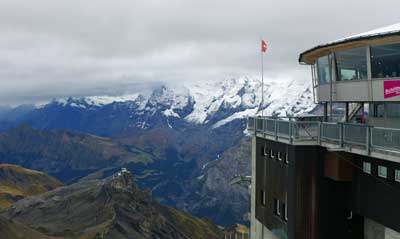
Both of those peak experiences are extraordinary and different from each other. Even so, compared to Jungfraujoch, Schilthorn is also faster and more comfortable on the way up and down. You can enjoy an excellent visit to Schilthorn in 4 hours or so (or a bit longer if you eat at the spinning Piz Gloria restaurant at the top), while a visit to Jungfraujoch requires closer to 6 hours.
NOTE: Schilthorn closes for maintenance for a week or two in late November most years.
Consider the Swiss Half-Fare Card instead
If you AREN’T going to be doing two or more of the long (and expensive) scenic train trips, you will get much better value out of the Swiss Half-Fare Card, which is explained a bit below.
Mt Rigi, near Lucerne, is 100% covered by the Swiss Travel Pass
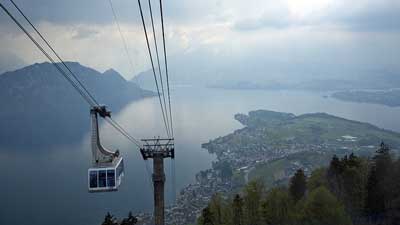
Is a Swiss Travel Pass right for you?
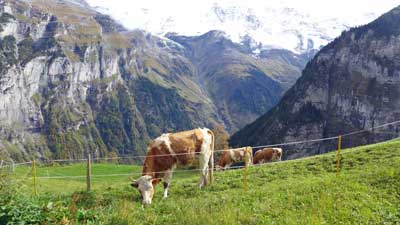
Most people only visit Switzerland for 5 or 6 days at most, so the 3-day and 4-day passes are the ones to focus on. But if you are staying for 8 days or more, those longer passes are almost certainly a great deal for you.
Long story short, if you plan on doing 2 of the more expensive scenic trains and the Jungfraujoch railway or the Schilthorn cable car, then the pass will save you money. Switzerland is expensive, but it’s worth it, and the travel pass can help make it a bit more affordable.
What the Swiss Travel Pass includes
- Free rail travel on normal trains and most scenic trains
- Discounted travel (about 50%) on popular tourist mountain trains
- Discounted travel (about 50%) on popular tourist cable cars
- Free travel on public transport in 75 towns and cities
- Free entry to around 500 museums in Switzerland
The Swiss Travel Pass covers the fare on the most popular scenic and panoramic trains. You can choose a normal seat in a regular carriage for no additional cost, but there is a supplement of CHF8 to CHF49 for a reserved seat in one of the special panorama carriages on these routes.
Prices of the 2024 Swiss Travel Pass
1st Class
- Adult 3-day Pass: CHF389
- Youth (4 to 25) 3-day Pass: 274
- Adult 4-day Pass: 469
- Youth (4 to 25) 4-day Pass: 330
- Adult 6-day Pass: 602
- Youth (4 to 25) 6-day Pass: 424
- Adult 8-day Pass: 655
- Youth (4 to 25) 8-day Pass: 469
- Adult 15-day Pass: 723
- Youth (4 to 25) 15-day Pass: 512
2nd Class
- Adult 3-day Pass: CHF244
- Youth (4 to 25) 3-day Pass: 172
- Adult 4-day Pass: 295
- Youth (16 to 25) 4-day Pass: 209
- Adult 6-day Pass: 379
- Youth (16 to 25) 6-day Pass: 268
- Adult 8-day Pass: 419
- Youth (16 to 25) 8-day Pass: 297
- Adult 15-day Pass: 459
- Youth (16 to 25) 15-day Pass: 328
Swiss Travel Pass Flex
This version costs a bit more, but you don’t have to use the travel days consecutively. It’s a great option for anyone who won’t be taking longer train rides each day.
- Adult 3 Flex days in 1 month (1st Class): CHF445
- Adult 3 Flex days in 1 month (2nd Class): 279
- Adult 4 Flex days in 1 month (1st Class): 539
- Adult 4 Flex days in 1 month (2nd Class): 339
- Adult 6 Flex days in 1 month (1st Class): 644
- Adult 6 Flex days in 1 month (2nd Class): 405
- Adult 8 Flex days in 1 month (1st Class): 697
- Adult 8 Flex days in 1 month (2nd Class): 439
- Adult 15 Flex days in 1 month (1st Class): 755
- Adult 15 Flex days in 1 month (2nd Class): 472
Where to buy the Swiss Travel Pass
The Swiss Half-Fare Card – A better option for many visitors
Far less confusing than the Swiss Travel Pass, you can instead get a Swiss Half-Fare Card, and it will be a better deal for many travelers. The price is lower and it’s much easier to do the math, and the discounts are greater on some things as well.
- Swiss Half-Fare Card for 30 days: Adults – CHF120 or US$129
What you get:
Those who buy the Swiss Half-Fare Card will get 50% discount on all trains, buses, and boats in Switzerland for up to 30 days, as well as 50% off all public transportation in 75 cities and towns.
>>>Buy the Swiss Half-Fare Card
Why the Half-Fare Card is a better deal for many
While the Swiss Travel Pass is a great deal for those doing many of the expensive scenic journeys and mountain sights within a few days, it’s not good value for those who are doing fewer of the expensive trips and/or those who are staying longer. Also, the Swiss Travel Pass only provides a 25% discount on the amazing Jungfraujoch Railway, which costs between CHF120 and CHF224 return depending on your starting point, while the Half-Fare Card provides a 50% discount.
The math is simple as well. You can just add up the cost of the trains, boats, and buses you’ll be taking while in Switzerland, and if the total is more than CHF240 or so, the Half-Fare Card will save you money.
Example itinerary:
- Zurich to Interlaken train (2nd Class): CHF50
- Schilthorn Cable Car: CHF112
- Jungfraujoch railway from Interlaken: CHF205
- Interlaken to Lucerne train (2nd Class): CHF33
- Mt Rigi roundtrip from Lucerne: CHF84
- Engelberg (near Lucerne) to Mt. Titlis Cable Car: CHF92
- Lucerne to Zurich train (2nd Class): CHF25
Total per person: CHF601
Total with Half-Fare Card (including price of card): CHF420.50
It would be tough to do all of those things in 4 days, although it is possible. If you bought a 4-day Swiss Travel Pass here is how it adds up:
4-Day Swiss Travel Pass: CHF259
Supplements for Schilthorn, Jungfraujoch, and Mt. Titlis: CHF203.25
Total cost: CHF462.25
Bottom line on the Swiss Half-Fare Card
Since the Half-Fare Card lasts 30 days and provides a larger discount on Jungfraujoch, it is better value for visitors who want to include that scenic top-of-Europe rail journey on their trip. The discounts also add up more quickly on Schilthorn and Mt. Titlis trips, just to name two examples, and you don’t have to take many longer rail journeys to get value out of the Half-Fare Card.
Swiss Saver Day Pass (A one-day unlimited travel pass)
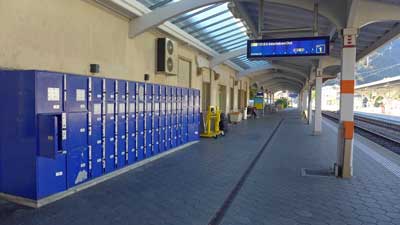
If you buy the Saver Day Pass at least 21 days in advance (and up to 60 days in advance) the 2023 cost is:
- 2nd Class (with Half Fare Card): CHF29
- 1st Class (with Half Fare Card): CHF82
- 2nd Class (with no Half Fare Card): CHF52
- 1st Class (with no Half Fare Card): CHF97
Once you research the normal cost of Swiss train fares you’ll see that the above prices are a very good deal for anyone riding more than 150 kilometers or so in a day. If you are just going, for example, from Zurich to Lucerne or Interlaken on a day, it’ll be cheaper to just buy that ticket individually. But if you are going from Geneva or Montreux to Interlaken or Lucerne then the Saver Day Pass will be much cheaper. Better still, you can use a Saver Day Pass to go from Interlaken to Geneva and back on the same day on the Goldenpass line and returning on the faster train through Bern, and it will still all be included for free.
If you don’t buy a Saver Day Pass at least 14 days in advance it’s more expensive, and if you only buy 1 to 3 days in advance it’s VERY expensive, so the key is to buy early. This is all confusing, but the Saver Day Pass should be a great option for many people only in Switzerland for one to three days.
Popular Swiss panorama scenic trains
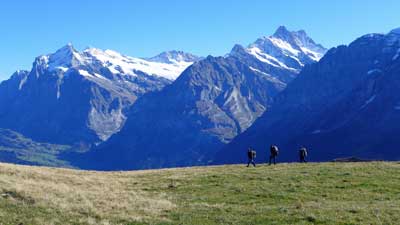
- Glacier Express
- Route: Zermatt to St. Moritz
- Train type: Panorama
- Journey time: 8 hours 3 minutes
- Distance: 291km
- 1st Class fare: CHF272
- 2nd Class fare: CHF159
- Compulsory seat reservation fee: CHF44 or 49
- Supplement for Swiss Pass holders: 13 to 33 for panorama carriage
- Bernina Express
- Route: Chur to Tirano and Lugano
- Train type: Panorama and bus
- Journey time: 4 hours 13 minutes and 3 hours 10 minutes
- Distance: 148km and 90km
- 1st Class fare: CHF113
- 2nd Class fare: CHF66
- Compulsory seat reservation fee: CHF32
- Supplement for Swiss Pass holders: 10 to 14 for panorama carriage
- GoldenPass Line
- Route: Lucerne to Montreaux
- Train type: Panorama
- Journey time: 5 hours 8 minutes
- Distance: 191 km
- Prestige Class fare: CHF131
- 1st Class fare: CHF96
- 2nd Class fare: CHF56
- Supplement for Swiss Pass holders: 8 to 15 for panorama carriage
- Gotthard Panorama Express (formerly Wilhelm Tell Express)
- Route: Lugano or Locarno to Lucerne
- Train type: Panorama and boat
- Journey time: 5 hours 21 minutes
- Distance: 182 km
- 1st Class fare: CHF164
- 2nd Class fare: CHF135
- Supplement for Swiss Pass holders: 39 to 49 for panorama carriage
- Swiss Chocolate Train
- Route: Montreux to Broc round trip
- Train type: Panorama or First Class
- Journey time: X hours X minutes
- Distance: 82 km
- 1st Class fare: CHF99
- 2nd Class fare: 89
- Supplement for Swiss Pass holders: 39
Popular Swiss scenic and theme trains
The scenic trains below are also extremely popular as sightseeing journeys rather than just as transportation, but can be used as both.
- Jungfraujoch round trip
- Route: Interlaken to Jungfraujoch
- Train type: special mountain train
- Journey time: 4 hours 41 minutes, round trip, plus time on top
- Distance: 73 km
- 1st Class fare: N/A
- 2nd Class fare: CHF224
- Supplement for Swiss Pass holders: 147 (so, a saving of CHF77)
- Gornergrat Railway
- Route: Gornergrat Railway
- Train type: Cog railway
- Journey time: 44 minutes return
- Distance: 10 km
- 1st Class fare: N/A
- 2nd Class fare: CHF90
- Supplement for Swiss Pass holders: 45
- Rigi round trip
- Route: Lucerne to Rigi
- Train type: Cog railway
- Journey time: 3 hours 25 minutes, plus time at the top
- Distance: 58 km
- 2nd Class fare: CHF78
- Supplement for Swiss Pass holders: None (this one is free with the pass)
- Mt Rigi Excursion (one-way and walk down)
- Route: Lucerne to Mt Rigi
- Train type: cogwheel train and/or cable car
- Journey time: 45 minutes up
- 1st Class fare: N/A
- 2nd Class fare: 49
- Supplement for Swiss Pass holders: 0
- Lotschberg Mountain Route and Centrovalli
- Route: Bern to Locarno
- Train type: Narrow gauge
- Journey time: 4 hours 40 minutes
- Distance: 212 km
- 1st Class fare: CHF158
- 2nd Class fare: CHF90
- Supplement for Swiss Pass holders: 5
- Jura round trip (Watchmaking Tour)
- Route: Neuchatel through Jura
- Train type: Regular
- Journey time: 3 hours 0 minutes
- Distance: 143 km
- 1st Class fare: CHF168
- 2nd Class fare: CHF108
- Supplement for Swiss Pass holders: 0
- Pre-Alpine Express
- Route: St. Gallen to Lucerne
- Train type: Regular
- Journey time: 2 hours 15 minutes
- Distance: 146 km
- 1st Class fare: CHF83
- 2nd Class fare: CHF47
- Supplement for Swiss Pass holders: 0
- Jura Foot Line
- Route: Basel to Geneva
- Train type: Regular
- Journey time: 2 hours 40 minutes
- Distance: 248 km
- 1st Class fare: CHF132
- 2nd Class fare: CHF75
- Supplement for Swiss Pass holders: 0
Popular Switzerland cable car rides
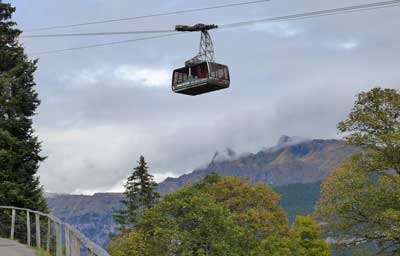
- Schilthorn
- Route: Stechelberg (Lauterbrunnen) to Schilthorn
- Train type: cable car
- Journey time: 1 hour
- 2nd Class fare: CHF108
- Supplement for Swiss Pass holders: 54
- Engelberg to Mt. Titlis cable car
- Route: Engelberg to Mt. Titlis
- Train type: cable car
- 2nd Class fare: CHF96
- Supplement for Swiss Pass holders: 46
The Swiss Travel Pass also includes free museum admission, but…
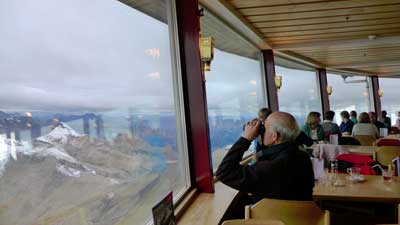
The problem is that the museums are only free on valid travel days, and almost no one would visit more than one or two museums with a Swiss Travel Pass. The trains and cable cars are so expensive that the pass gives very good value to cover those, so you don’t want to waste precious sightseeing time walking through a museum that only costs CHF10 anyway.
In other words, calculate the value of a Swiss Travel Pass on the travel savings only, and if you visit a museum here or there, then great. Most people are better off trying to squeeze in an additional train ride each day, and ignoring the museums. Switzerland is all about the outdoor scenery. As nice as the museums may be, they are not why you are there.
The pass includes free public transport in most Swiss cities
Similar to the free museum part of the offer, it’s best to ignore or minimize the value of free public transportation. It could be helpful in Zurich, but in most other Swiss tourist towns you won’t need much public transport. In fact, in Interlaken, each hotel or hostel guest automatically gets a card for free public transportation within the town (including between the two train stations).
So you might use a ride or two each day on public transport, but that won’t add up to much in terms of value of your Swiss Travel Pass.

OK thank you for the advice Rodger we might go with the half pric pass , just a another questions we are fliying into germany first from australia at the end of this month
and staying there and france for 7 nights before taking the train into switzerland from strasboarg ,is it ok to get the pass while im in europe? i heard it needs to be purchased 7 days before being used .
Also could i puchase a ticket for Zermatt at the train station in Strasbourg? or do i need to get off at Basel to do that ?
Hi Rodger my daughter (16) and i are travelling from strasborg to zermatt and staying 3 nights then heading to milan via Domodossola
while in Zermatt we plan to spend 2 days taking the cable car to matterhorn glacier and on the Gormergrat railway and a day just relaxing
my question is are any of the swiss passes suitable for the trips are planing?. thanks
Frank,
The Half Fare Card is what you want. It costs CHF120 per adult (ages 16+, unfortunately) and gives you a 50% discount on every train and cable car ride in Switzerland (with just a few exceptions). It even covers a 50% discount on the trip to Domodossola and back. I discuss the Half Fare Card in the article above. It will be a much better value than a Swiss Travel Pass because that covers trains but only gives you a 25% discount on most cable cars, and it costs much more.
By the way, if your daughter were only 15 she could actually ride along with you for free using a complimentary Swiss Family Card, which allows for one free age 6 to 15 with one paid adult. They do require a passport, I believe, so I think you missed that discount. Let me know if you have any other questions. -Roger
Hello,
Wondering, on trains or shuttles to and from airports and what passes best to explore?
Our plan ( family of 4 , 2 adult , sons 22,24):
Arrive Zurich 5/25 10 AM, go right to Wengen. Do we take train all the way to Wengen or a shuttle/car to Interlaken and train up ?
Staying in Wengen 3 nights, but we are planning to go Schilthorn, possibly Top of Europe and a trip to Lauterbrunnen to do some para sailing , etc. We would like to hike take cable car , etc.
Leaving 5/28 , but flying out of Basel to Naples at 2PM. Do we take a train or shuttle to that airport ?
The trains passes seem confusing when and where you can go , may be easier to just have a car pick us up.
But is that 4 day pass best and some added pass to use in upper mountains ? and skip a car service ?
Thanks in advance for suggestions !
Diane
Shuttles seem to be less than 4 travelers on a train ?
Diane,
I’ll try to take the questions in order…
From Zurich Airport you can take trains all the way to Wengen in 3 hours and 9 minutes. You can buy the ticket all the way through, but it will require a train change in Bern and another in Interlaken Ost and then another change in Lauterbrunnen before the 12 minute ride to Wengen. It sounds more complicated than it is, and Swiss trains are notoriously punctual and easy to use. You could get a taxi or shuttle to take you the whole way, and it would definitely be easier, but I’m sure it would also be very expensive. With four people it might still be worthwhile.
From Wengen you can take a train to Basel SBB (main station) and then you take a shuttle bus to the airport from there. By the way, those train rides are extremely scenic almost every minute of the journey, and the trains are very comfortable and relaxing. If you all four piled into a minivan instead you’d get nowhere near as nice of scenery, partly because the roads don’t go the same places as the train tracks do. I’ve never hired a car in Switzerland and I’m sure the price is shockingly high (almost everything in Switzerland is shockingly expensive), but four adult train tickets won’t be cheap either. However, you’ll want to get either a Swiss Travel Pass or Half Fare Cards for each person anyway, so at most those train fares will be half of the full price.
As for the Swiss Travel Pass, I don’t think it would be better than the Half Fare Card unless you were doing at least another train ride or two. It will give you a 50% discount on Schilthorn, just as the Half Fare Card does, but it only gives you a 25% discount for Jungfraujoch (the top of Europe). The train passes are definitely confusing and it seems that you really have to ride the trains quite a bit in a few days in order for them to be better value than the Half Fare Card. The Swiss Travel Pass actually covers some of the cable car rides completely, including Lauterbrunnen up to Murren (on your way up to Schilthorn) and I believe it also covers the one up from Wengen to the main hiking start point above town. Long story short, I couldn’t tell you which is the better option without knowing everything you’ll be doing and adding it all up. My hunch is that the Half Fare Card will probably be a better value, and taking the trains would probably end up being cheaper and more enjoyable than a car service. Sorry I couldn’t be more exact. Let me know if you have any other questions. -Roger
Thank for breaking this down. It’s been my #1 concern as the pass options seem sooo confusing.
I will be in Switzerland for 3 days.
Day1: 7AM: Zurich to Luzern and up to Pilatus (pending weather) then to a small town called Boswil to visit a friend for the night.
Day 2 Early AM; Boswil to Murren, where I am staying the night, visiting Schiltorn (the bond exhibit etc) and hiking around etc.
Day 3: Murren back to Zurich, explore Zurich for a few hours then catch flight
I was considering the Swiss Travel Pass, but after reading your breakdown and doing the math the Half Fare card seems to be the way to go.
Just wanted to state my appreciation for all your research and suggestions.
Micah,
You are very welcome and I agree that the Half Fare Card is your better option. Schilthorn is amazing, but even in clear whether you probably won’t want to spend more than an hour or two up top. The Bond exhibition is a bit cheesy, but it’s fun and a good use of 30 minutes or so. Fortunately it’s included in the cable car price to the top. The Piz Gloria revolving restaurant is good though, and surprisingly the prices of food and drinks there are similar to what you pay in town. In other words, they are expensive, but not really any more expensive than a similar restaurant without a view. Have a great trip and let me know if you have any other questions. -Roger
Hello,
Was hoping you could shed some advice on my rough itinerary and also if you think point-to-point or a Swiss travel pass would be best? Our main goal is to explore the French and Swiss Alps and hike around, also our first time abroad for both of us. May 22nd – June 1st 2018
My husband and I will be flying into Geneva late May 22nd and staying the night.
May 23rd – Geneva -> Lake Annecy
The next morning taking a bus to Lake Annecy for 2 nights.
May 25th – Annecy -> Chamonix
heading east to Chamonix for 2 nights.
May 27th – Chamonix -> Interlaken Ost (Longest travel day) Then we were looking into traveling from Chamonix to Interlaken via Visp (4 hours) or via Montreux on the Golden Pass Scenic train, this is where I’m unsure. It takes quite a bit more time and traveling the golden pass. 3 days in Lauterbrunnen/Wengen/Murren area – most excited to hike around. Where would you recommend to stay in the Bernese Oberland?
May 30th – Then heading to Lucerne for 2 days and explore Mt. Pilatus and possible boat tour.
June 1st- Lucerne -> Bern for the afternoon -> Geneva (flight at 9pm).
Thank you in advance for your time!
-Meagan
Meagan,
A Swiss Travel Pass is best for trips where you are doing at least 2 or 3 longer train trips within Switzerland in a short time. It looks like you could get good value out of a pass, but maybe even better value from the Half Fare Card. You really would have to go to the Swiss rail website and check the fares on the things you plan to do and see if the pass is cheaper than the savings with the Half Fare Card. Either one seems certain to be cheaper than buying full fare tickets, at least as long as you are also going to do some cable car rides and maybe Schilthorn and/or Jungfraujoch. More information about that, along with my recommendations about where to stay are discussed in detail in my main article on where to go in Switzerland. And you also have to take into account Pilatus or going up Mt Rigi, which is covered by the Swiss Travel Pass as opposed to the 50% discount for the others.
The Goldenpass train is lovely and the slow part of it is when you go through the green valley that cuts between Montreux and Thun. It’s really nice, but the train going through Visp will also be amazing because it’s going to be more dramatic Alpine views the whole time. Speaking of that, in my opinion almost every train ride in Switzerland is really scenic and wonderful, and the certain routes with names aren’t very different from the others. So I would probably take the faster route, especially as it’ll be very scenic as well.
I wish I could help more, but the only way I could be sure is to go through and add up all of the train and cable car and boat rides that you might take, and compare the prices with the Half Fare Card. Let me know if you have any other questions. -Roger
Roger,
I have finalized my itinerary. On day 1, We will land at Zurich in the morning, and take the next available train to Interlaken. we will spend the first night at Murren and the next night at Interlaken. We are wondering what would be the best sequence to see Jungfraujoch, Schilthorn and the village of Gimmewald. Not sure if there is something else in the Interlaken area that we can and should also see in the given time.
Day 3 will be very very hectic, but we have decided to give it a shot. We will leave Interlaken in the morning for Zermatt, take Glacier Express to St Moritz, return to Lucerne the same night. Can you comment on which side of the Glacier Express will provide better overall view and which side will be more exposed to sun when going from Zermatt to St Moritz?
Day 4 and 5 at Lucerne. Haven’t yet planned anything. Any help will be appreciated. Day 6 – leave for Zurich airport from Lucerne in the morning to catch the flight at 9.35am.
This broad planning is done. Now I need to work out the finer details where your help will be appreciated.
Thanks,
Subrata
Hello Roger
Firstly such an awesome article. I read your other articles too and found many new and interesting tips for our trip. My question is that my husband and I will be finishing our trip of Europe of 4 countries with Switzerland with Lucerne as our base in mid May . We will stay for 3 night and will reach Lucerne by 10 or 11 am. So here is the beeakdown so far:
1day-explore Lucerne
2nd day- go to Pilatus or mt Rigi (which one do you recommend)
3rd day-go to Titlis (as we want to try some snow activities) will that be available during mid May
4th day- leave early morning for Zürich
We are open to suggestions. What do u suggest we include and exclude.
Also the main question what about the Swiss pass ? Do u think we should buy any of those? Also after reading your other Article on where to visit Switzerland for a short trip I kind of want to go to Interlaken too . Is that too ambitious of me?
Regards
Ruchika
Ruchika,
Rather than spending 3 days in Lucerne I would spend at least one of those days in Interlaken. They are only 1 hour 49 minutes apart by train, so you could even go in the morning and go up Schilthorn or Jungfraujoch and come back to Lucerne that evening. Staying in the Interlaken area would be nicer, but it’s also a bit of a hassle to change hotels so often.
As for Rigi vs. Pilatus, the nice thing about Rigi is that it’s very easy to visit it while on the boat cruise of the lake that you’ll probably also want to do. Both are very nice and if you don’t want to do the boat cruise on the lake it’s better to do Pilatus.
On Titlis there should be snow at the top and the ski lifts should still be going, so it’s a good place to play in the snow a bit, and an excellent view.
As for the Swiss Travel Pass, it’s hard to say whether it would be good value for you or not without knowing all of the things you’ll actually do and adding up the costs. Especially if you go to Interlaken and also go up Schilthorn it could be your best value to get the pass. The article above is kind of confusing because the Swiss Travel Pass is fairly confusing and you literally have to add up the costs of each thing to see if it saves the most money. The prices of the domestic trains and the cable cars and such are the same no matter when you buy, so it’s pretty easy to research each of them. If it turns out that the Swiss Travel Pass doesn’t quite save enough money, then the Half Fare Card is definitely the way to go. Let me know if you have any other questions. -Roger
Laura,
It sounds like your trip is really coming together. I’ve done many Europe trips where I ended up staying one or two nights in each city because I was doing research and trying to see as much as possible for my work. Honestly, it’s not nearly as fun as it sounds, so my main recommendation would be to focus on more time in fewer places. One key issue is that even if you have a short train ride of two hours, it still means packing and checking out of your hotel or hostel almost an hour before your train leaves, and you aren’t done checking into your new hotel or hostel and back out on the street for another hour after the train arrives. So that’s four hours in the middle of the day that are taken up in transit, and those four hours tend to be quite exhausting as well. That leaves you with maybe half a day for local sightseeing, and then dinner and back to your room to get sleep and wake up and do it all over again in the next city.
Still, if you want to experience the Cinque Terre I would stay in Vernazza because that’s the village that nearly all of the nice photos are from. And honestly I wouldn’t recommend Siena unless you had at least two weeks in Italy. Siena is most famous for its twice a year horse race through its unusual town square, and the rest of the year it’s just yet another historic town in Italy that will remind you of so many others.
Thanks for the advice, again. Really appreciated. Laura
That Seat61 site is awesome and I’m a big fan of the guy who runs it. I use it for all of my own train trips, at least when there is something unusual about them such as the local train from Naples to Sorrento. -Roger
Thanks Roger, very helpful. I did book in Murren and am looking forward to it. I then used credit card points for the 2nd night in Interlaken, near the West train station, to be up early for the train connection to Milan. I did get the half fare pass and used it for my Basel to Interlaken connection. Cost was only 15 Euros- Saver fare. I’ve worked out the first couple of days in Italy (Milan,Venice, Florence) One convent stay, one hostel- a triple- hoping for the best, timed museum entries in Florence, Duomo, etc.
I am still looking for Cinque Terre lodging (1 night) Siena (1 night) and then on to Rome (3 full days) I’ve got about 1.5 to 2 days built in, as extra, to the above, in case I want to linger an extra day or half day in Cinque Terre, Siena or go South of Rome overnight. I don’t think Almalfi because of the bus connection. But maybe Naples, Sorrento.
I could do Rome first, after Siena, to see if I get a lot done in 2.5 days, instead of 3, then move South (return flight from Rome is on March 27, early) Or, I could bypass Rome immediately (pass through on the train) and do something South first, and then finish with the final 2.5 or 3 days in Rome. I have a Roma and Omni pass so I think I need to do Rome days all in a row.
Do you have any suggested itinerary for 6 further total days that would include arriving Cinque Terre in early evening of March 20th, then going on to Siena, Rome and other logical connections by rail? Sleeping one night in each. Returning to Rome either late afternoon of Monday March 26th or including Rome as that last night. I would love to take a Ferry from Bari to Dubrovnik but I don’t think the time involved for overnight Ferries both ways is a wise use of my time this trip. I’d have to skimp out on something else.
I’m using this for Train advice- very helpful. Italy locations are outlined clearly with tips by rail:
https://www.seat61.com/Italy-trains.htm#How_to_reach_Herculaneum,_Pompeii_&_Sorrento
thanks,Laura
February 20, 2018 at 10:06 pm
Laura,
I’ll try to answer the questions in order…
I’m not sure what happens to Saver tickets if you miss them, but my guess is that you can use them on the next train if the first one arrived late. Swiss trains are notoriously punctual, but a train from Paris could be late. That said, the high-speed intercity trains like that do tend to run on time.
The Half Fare Card will pay for itself pretty quickly so I highly recommend it. As you mention, Schilthorn or Jungfraujoch nearly pay for the HFC alone, and those little cable cars and boat rides also add up.
You could stay near either train station on your last night, as all trains stop in both stations and Spiez is actually closer to the West station. There are more restaurants and such near the West station as well. And again, the trains are remarkably punctual, so you won’t have to worry.
If you could stay in Gimmelwald (at the Mountain Hostel) or in Murren on your Schilthorn day, that would be ideal. The views from both villages are absolutely stunning. The cable car up to Schilthorn runs until about 10:30pm for the bottom few legs, and it starts early, so you can always get up and down. From the Lauterbrunnen train station you walk outside and you’ll see a bus waiting for the train passengers. It goes to Stechelberg, which is the bottom of the cable car. Off the bus and in the queue for the cable car you go. Once in motion the cable car takes 5 minutes up to Gimmelwald. Then you walk across the platform into the waiting cable car that goes 5 more minutes up to Murren. Then you get off that one and walk just a bit onto another one that takes you about 10 minutes up the mountain into another village. I think from there the next cable car takes you all the way up to the Schilthorn Observation Deck.
If you stayed in Gimmelwald or Murren you could leave your bag at the hostel and come back for it on the way down. The cable cars go every 30 minutes so you’d have to wait for the next one, but it’s no problem doing the journey over the course of the day. In other words, you don’t have to go straight up and straight back down. I highly recommend people get off in Murren and walk around a bit on their way down, and then walk 15 minutes down the hill to Gimmelwald to take the final leg down.
The cable cars are huge by the way, so you could take your bag with you. They have room for about 60 people standing up, and there is usually far fewer than that. You’ll often ride up and down with locals who are transporting wood or groceries or whatever else, so a backpack is no problem. There are also luggage lockers at the Interlaken train stations, and probably in Lauterbrunnen as well. As always, let me know if you have any other specific questions. I’m sure you will love this trip. -Roger
Reply
Laura,
It sounds like your trip is really coming together. I’ve done many Europe trips where I ended up staying one or two nights in each city because I was doing research and trying to see as much as possible for my work. Honestly, it’s not nearly as fun as it sounds, so my main recommendation would be to focus on more time in fewer places. One key issue is that even if you have a short train ride of two hours, it still means packing and checking out of your hotel or hostel almost an hour before your train leaves, and you aren’t done checking into your new hotel or hostel and back out on the street for another hour after the train arrives. So that’s four hours in the middle of the day that are taken up in transit, and those four hours tend to be quite exhausting as well. That leaves you with maybe half a day for local sightseeing, and then dinner and back to your room to get sleep and wake up and do it all over again in the next city.
Still, if you want to experience the Cinque Terre I would stay in Vernazza because that’s the village that nearly all of the nice photos are from. And honestly I wouldn’t recommend Siena unless you had at least two weeks in Italy. Siena is most famous for its twice a year horse race through its unusual town square, and the rest of the year it’s just yet another historic town in Italy that will remind you of so many others.
That Seat61 site is awesome and I’m a big fan of the guy who runs it. I use it for all of my own train trips, at least when there is something unusual about them such as the local train from Naples to Sorrento. -Roger
Hello! We’ll be traveling on June. We are a family of 5 with 3 boys ages 19, 12 and 7 and I am having a hard time choosing the best and economical pass for us since we will be only in Switz for 3 nights and 4 days planning to visit Lucerne and Interlaken if possible before going to Milan having Zurich as our base. I am open to any advise since it is our first time. Thank you so much!
Alona,
Unfortunately, the 19-year-old is an adult in the eyes of Switzerland and every other European country. But the good news is that the two younger ones can ride for free with any pass once you pick up a free Swiss Family Card, which allows one 6 to 15 year old to ride for free with a paid adult using a pass. Most likely the Half Fare Card will be your best choice, so you’d need three of those and can request a free Swiss Family Card for the young ones. Without knowing how many train trips and cable cars and boat trips you’ll be making, that is my best guess. The Swiss Travel Pass is usually only good value for those taking at least two of the longer scenic train trips.
By the way, if I were you and you have a choice I would NOT base myself in Zurich. I discuss it near the top of my main article on where to go in Switzerland. The short version is that Zurich is incredibly expensive for hotels and restaurants, and it’s kind of dull compared to other famous large European cities. I’d stay in the Interlaken area if you can, which I also discuss in that other article. You can get a much nicer hotel for less money there, and still take trains wherever you want. The Swiss trains start early in the morning and they are always on time, so it’s not really necessary to stay in a city. I’m happy to answer any other questions if you have them. -Roger